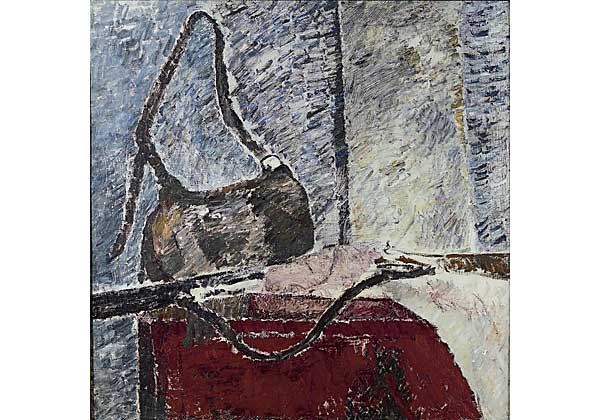
artist:
Udaltsova, Nadezhda Andreyevna
Udaltsova, Nadezhda Andreyevna
technique:
Oil on canvas
Oil on canvas
size
96,5 х 96,5
year
1922
Udaltsova, Nadezhda Andreyevna
(b. 1886 Oryol – d. 1961 Moscow)
Painter and graphic artist
1905–1908 – Took drawing and painting classes from K. Yuon and I. Dudin (N. UIyanov also taught there).
1909–1911 – Studied at private studios, including the studio of K. Kish in Moscow.
1912–1913 – Continued her artistic education at La Palette Academy in Paris under Jean Metzinger, Henri Le Fauconnier and Dunoyer de Segonzac.
1913 – Worked in V. Tatlin’s Tower Studio in Moscow.
Took part in exhibitions beginning in 1914, including: 1914 – Jack of Diamonds; 1915 – Tram V and Left Trends; 1915–1916 – Exhibition 0.10; 1916 – The Shop; 1921–1922 – World of Art; 1925 – Moscow Painters; 1931 – Thirteen group.
1916 – A member of the Supremus Artists’ group.
1918 – Assistant to K. Malevich.
1918–1920 – Taught at the First State Free Art Studios.
1920–1930 – Taught at Vkhutemas-Vkhutein [Higher Art and Technical Studios and Institute].
1930–1932 – Worked at the Moscow Textile Institute.
1932–1934 – Worked at the Moscow Polygraphic Institute.
Our critics are like stockbrokers who speculate on a rise or a fall. Critics play with our names in the same way, and in reality give nothing to the art, to the public or to the artists themselves. People who have compromised themselves, who have been proven ignorant in questions of art time and again, hold senior positions in magazines and affect the minds of the reading public. Muscovites can understand matters of art without the input of these articles, but people in the province are completely in the critics’ power and the harm they do is irreversible. <…> The conditions must be created in which artists under attack could defend their work.
Our critics are incapable of raising a single question dealing with modern art because most of them are old specialists, raised on Mir Iskusstva [World of Art] style, and Peredvizhniki (The Itinerants group); they can’t understand modern art and are only able to talk about “exact form.” Critics love to play hide-and-seek and for years on end ignore dozens of paintings that are on exhibition. Now, it was possible to do this in bourgeois society, where financial speculation was involved, but in our Soviet state such games are inadmissible. <…>
The goal of “a new realism” is right, and proletarian art is possible. It is dictated by life itself. Art in its essence is the People’s art; but the ruling classes made it serve themselves.
Real art is always close to the people and takes its images from the people and from nature.
Many critics have now come to the conclusion that modern art should be precise and graphic, without any nature at all. In reality, however, art can progress and abandon the old standards of AKhRR [The Association of Artists of Revolutionary Russia] and false styles of OST [The Society of Easel Painters] only by studying nature and life.
Nadezhda Udaltsova, “Response to ‘Our questionnaire among artists”
N.A. Udaitsova. Zhizn russkoy kubistiki. Dnevniki, statii, vospominaniya: Arkhiv russkogo avangarda [Life of Russian cubism. Diaries, articles, memoirs: Archive of the Russian avant-garde]. M.: Literaturno-hudozhestvennoye agentstvo RA, 1994. Pp. 69—70.


